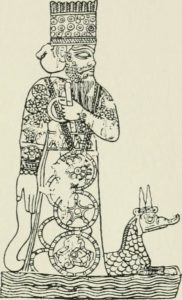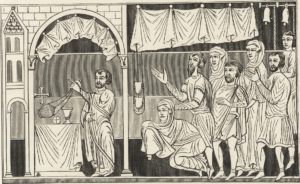New Year’s Traditions Through the Years
Celebrating the turn of the year has been a tradition upheld for millennia. Despite this however, January 1st has not always been the chosen date to mark the special day. This blog will explore the history of New Year’s Traditions.
It is believed that the earliest year celebrations of new year’s took place roughly in 2000 B.C – and in this blog, we will look at what happened during this era, with some extra examples leading up to the modern day!
Akitu (Babylonians, 2000 B.C)
Years ago, in ancient Mesopotamia, the Babylonians would gather in late March/early April (which was the first month of the Babylonian year, known at the time as ‘Nisannu’) to celebrate the festival known as Akitu. During this multiple-day festival, the Babylonians would celebrate the sowing of barley and the fertility of the land.
There were two sites in which the festival took place: the temple (known as the ‘Esagila’) that was built to honour the Babylonian God Marduk, and a building located in the northern section of the city, known as the ‘house of the New Year’.
The festivities began on 4 Nisannu, during which the high priest of the Esagila declared the beginning of the new year. Beyond this point, various activities took place:

- 4 Nisannu – the King would travel to a Nabû temple 17 kilometres from Babylon, within which he would spend the night. During this time, the high priest of the Esagila would recite the Babylonian creation epic.
- 5 Nisannu – the King would return to the city of Babylon during this day along with a statue of Nabû, sent from the city of Borsippa. Following this, the King would head to the Esagila to greet Marduk, during which he would be hit hard on the cheek (to
draw tears) by the high priest of the Esagila whilst telling Maduk that he had not sinned. - 6 Nisannu – on this day the statue of Nabû would visit what was known as the temple of Ninurta, where it was set to defeat two enemies. After this, it would be taken to the Esagila, where it would be placed near Marduk’s statue. All the other God statues would then arrive in Babylon.
- 7 Nisannu – after being cleaned and placed in new dresses, the statues were brought out to be shown to the Babylonian crowds. Here, the Gods would announce their policy for the next year. They would then be placed on ships and taken to the house of the New Year.
- 9-10 Nisannu – although little is known about these days, it is believed that sacrifices would take place, performed by the King himself.
- 11 Nisannu – the statues would be taken back to Esagila, where they saw the Nabû off, before they were taken back to their original locations.
Janus (Romans, 45 B.C)

It was during the reign of the Romans that the date of the New Year was changed to January 1st – rather than March 1st. This was down to Julius Caesars decision to honour the Roman God, Janus (the God that January is named after).
The Roman God Janus symbolised looking back at the years gone and looking forward to those ahead – being depicted with two heads facing either way. The celebrations that took place during the day included gift giving, parties, drinking, large feasts, and dancing. Gifts would also be presented as an offering to Janus himself, in hopes of gaining good fortune for the coming year.
It was also customary for many Roman citizens to work some of the day itself, which would be a good omen for the year to come.
Feast of the Annunciation of Mary (Medieval, 567 A.D)
Up until the 16th century, during medieval times New Year was changed once again to being on the 25th of March. At the time, celebrations associated with the New Year’s were shunned as Pagan and non-Christian. As such, many opted to celebrate the new year in coincidence with the celebration of the Feast of the Annunciation of Mary.
of Mary.
Years later, during 1582, the Gregorian calendar restored January 1st as the day of the new year for most Catholic countries, which came in the form of the Feast of Fools, an event linked to the celebrations of Christ’s Mass – which you can read about in our last blog post. This event involved drinking, slaves and servants openly insulting their masters, cross-dressing, and as the name suggests, grand feasts.
The change to the 1st of January was delayed for many protestant countries – for example Britain didn’t adopt this new date until 1752.
Modern Day New Year’s Traditions
In comparison to the traditions of old, modern day new years are mostly focused around seeing friends, family and loved ones – drinking alcohol, eating meals together, sharing stories, and making new year’s resolutions.
We hope that you all have an excellent New Year’s Eve, and a great start to 2022 with New Year’s Day!
If you find yourself with some spare time this New Year’s weekend, why not have a read of our other blogs?

